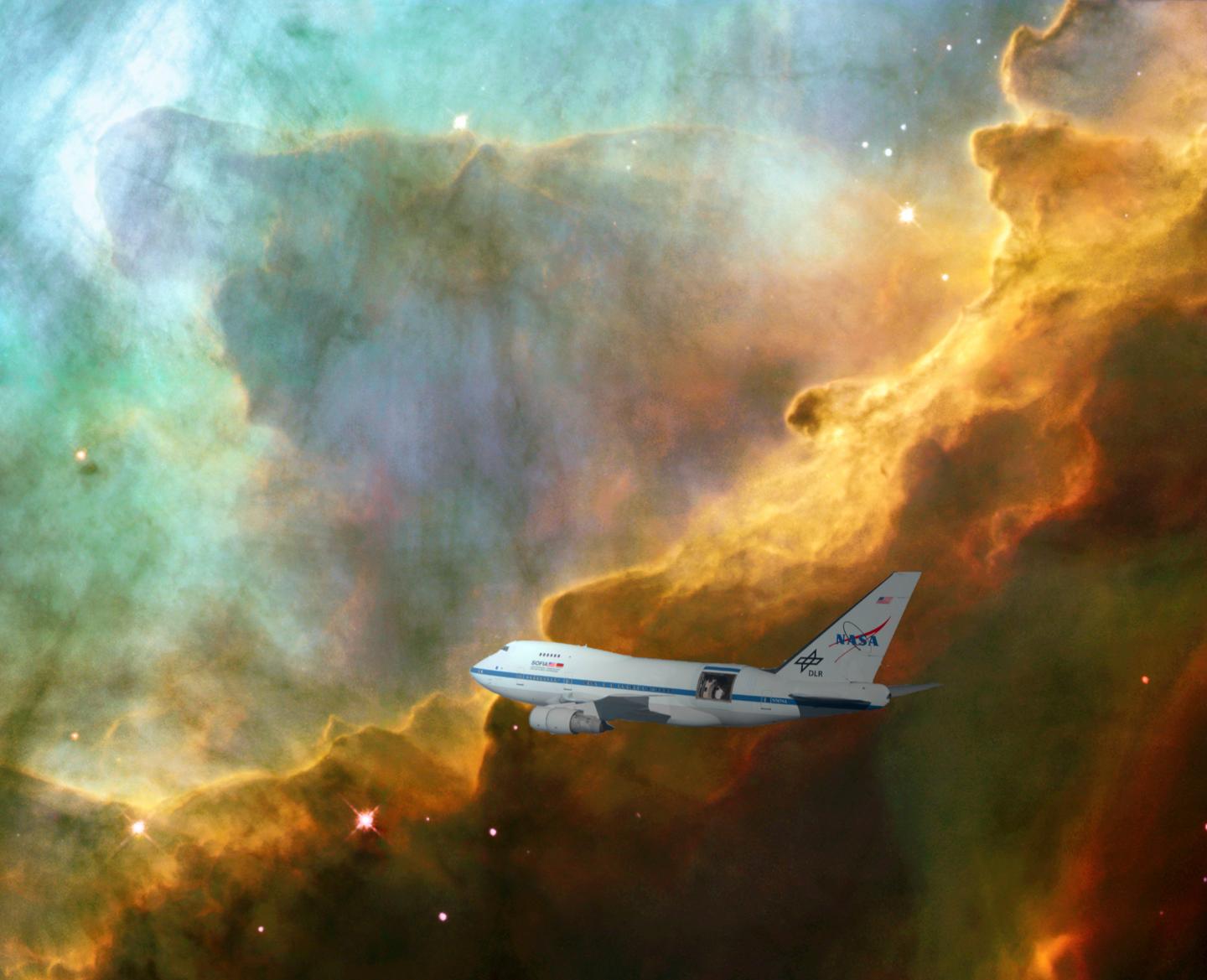
The SOFIA airborne observatory has released a stunning new image of the star-forming region RCW 49. If you are listening to this episode as a podcast, I want you to stop what you’re doing, unless of course you’re driving, and click to our website, DailySpace.org, to look at this image. Our universe is more beautiful than any sci-fi artist of times gone by ever imagined, and our ability to take this image is straight out of science fiction.
SOFIA is an airplane – an old 747 – that has a door cut out of its side that can be opened when the plane is at altitude to allow a telescope to be pointed skyward. This telescope, which sees the universe in colors that lower levels of our atmosphere generally block, has to compensate for any vibrations in the plane and track the sky in a way that both compensates for the Earth’s rotation and the plane’s motion. That is a lot to ask of a mechanical system, but SOFIA’s tracker is able to do all that and more.
From the ground, this region doesn’t really look like much to the eye, but to the brain of an astronomer, it is a massive star-forming region, and while it is very young, it is old enough that its largest stars have formed, and one or some of them have started blowing bubbles in the surrounding gas. To figure out exactly what was going on, images sensitive to the cool light given off by cool gas needed to be obtained, and that meant using SOFIA.
According to study lead author Maitraiyee Tiwari: When massive stars form, they blow off much stronger ejections of protons, electrons, and atoms of heavy metal, compared to our sun. These ejections are called stellar winds, and extreme stellar winds are capable of blowing and shaping bubbles in the surrounding clouds of cold, dense gas. We observed just such a bubble centered around the brightest cluster of stars in this region of the galaxy, and we were able to measure its radius, mass, and the speed at which it is expanding.
To make these observations, they looked specifically at the light from different kinds of atoms and at how that light indicates the atoms are moving. Tiwari goes on to explain: We saw that the expansion of the bubble surrounding Westerlund 2 was reaccelerated by winds from another very massive star, and that started the process of expansion and star formation all over again. This suggests stars will continue to be born in this shell for a long time, but as this process goes on, the new stars will become less and less massive.
While the universe may not be turtles all the way down, clusters of stars may be built on shells of stellar wind, making it star shells all the way down through time.
More Information
University of Maryland press release
“SOFIA FEEDBACK Survey: Exploring the Dynamics of the Stellar Wind–Driven Shell of RCW 49,” M. Tiwari et al., 2021 June 23, The Astrophysical Journal




 Join the Crew!
Join the Crew!
 Escape Velocity Space News
Escape Velocity Space News
0 Comments